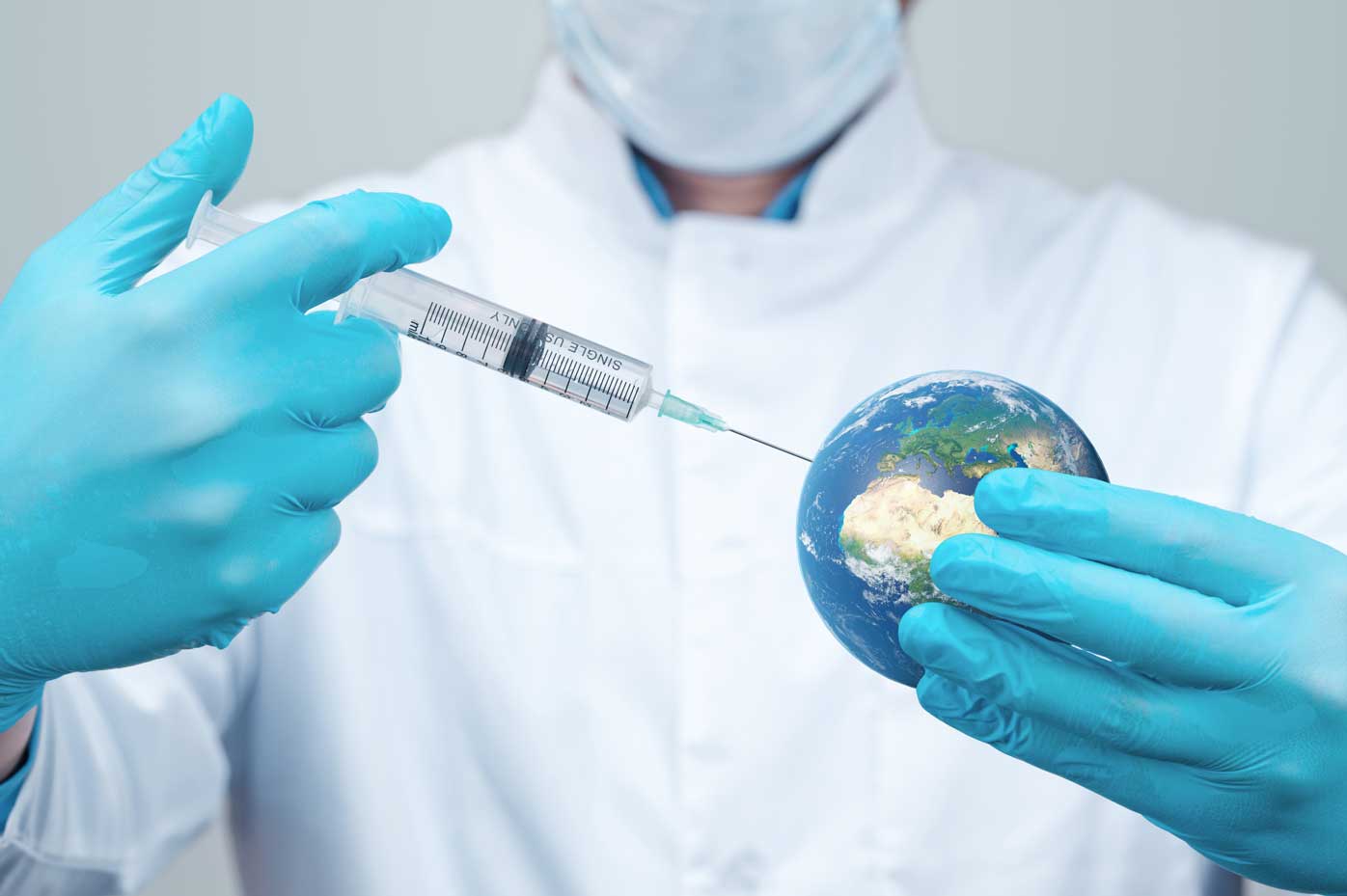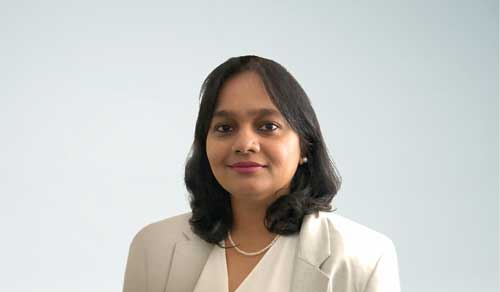Vaccines are the most effective tools we have to fight the SARS-CoV-2 pandemic.
Currently, around 5.7 billion doses have been administered globally, of which 73% have been administered in just 10 countries1. Wealthy nations have administered 61 times more individual doses as low-income countries.
For much of the world, especially low-income and middle-income nations, vaccines remain frustratingly out of reach. Although global efforts such as COVAX (COVID-19 Vaccines Global Access) strive to increase international vaccine access, recent analyses suggest that significant levels of vaccination may not be achieved in multiple countries until at least 20232. This startling statistic is of intense interest within the public health and insurance communities and has led to calls for more equal vaccine production and distribution.
Vaccine Inequity
The term "vaccine equity" refers to the equal distribution of vaccines across countries, irrespective of their developmental or economic status. However, in the case of COVID-19 vaccination, higher income countries started inoculation on average two months earlier than low-income countries. According to the World Health Organization (WHO), as of October 6, 2021, 60.93% – greater than one in two people – have been vaccinated with at least one dose in high-income countries. This compares to just 3.72% – one in 27 people – in low-income countries3.
It is now clear that unmitigated transmission can lead to the emergence of new, more transmissible variants that could potentially evade vaccine-induced immunity. This scenario would most likely unfold first in low-income and middle-income countries due to lack of access to vaccines, but after emerging, such variants would inevitably threaten the global population.
Expenditures to prevent this outcome seem more than justified. The RAND Corporation estimates that high-income countries would see a return of US$4.8 for every $1 spent on supplying vaccines to low-income countries4. While vaccination will increase healthcare expenditures in all countries, the spending burden is more evident in low-income countries; these nations may need to increase health spending by 30-60% to get 70% of their population vaccinated. On the other hand, high-income countries would need to increase average healthcare expenditure by 0.8% to achieve 90% vaccination rate.
Why Is Vaccine Equity Important?
Apart from the risk of more deadly variants emerging, vaccine inequity deepens the gap between the rich and the poor. According to the United Nations, vaccine inequity will have lasting detrimental impact on socio-economic recovery in low- and lower-middle income countries5. According to the United Nations Development Program, eight out of 10 people pushed into poverty directly by the pandemic are projected to live in the world’s poorest countries in 20306. Equitable access to vaccines is imperative to achieve WHO’s global target of vaccinating 70% of the population in all countries by mid-2022.
Role of COVAX
WHO, alongside the United Nations International Children’s Emergency Fund (UNICEF), the Coalition for Epidemic Preparedness Innovations (CEPI), and the Global Alliance for Vaccines and Immunizations (Gavi) have established a COVID-19 vaccine global access facility, known as COVAX. The objective of COVAX is to provide doses for at least 20% of the global population, to deliver vaccines as soon as they are available, and to end the acute phase of the pandemic and rebuild economies7.
Currently, COVAX has 141 participants, but involvement has not necessarily translated into action. High-income countries' activities to divert excess vaccine doses to national stockpiles has hindered efforts to supply COVAX. The organization has reported a deficit of over 100 million doses when compared to pledged levels. As per recent estimates, COVAX will have distributed 1.425 billion doses by the end of 2021, far fewer than the promised 2 billion doses. A large part of this problem can be traced to a failure to procure vaccines early in the pandemic. While COVAX was raising money in June 2020, high-income countries had already begun to buy initial supplies of vaccines from the manufacturers. Additionally, the world’s biggest COVID-19 vaccine manufacturer – The Serum Institute of India – suspended exports from India in late March 2021. Thus, it was unable to supply over a billion doses promised by the end of 2021. To address this, COVAX has made requests to donors, especially from countries with high vaccine coverage. Owing to this, in June 2021, members of the Group of Seven (G7), or major industrialized nations, pledged to donate more than a billion doses. The current trend to offer booster doses has compounded the problems faced by COVAX. Although a moratorium on boosters was called for by WHO until the end of 2021, it did not deter some nations from launching booster programs.
Production and Supply Chain Barriers
The production of vaccines remains concentrated in specific geographies including the United States, the EU, India, and China. For example, in spite of having “finish and fill” capabilities, nations in Africa continue to procure active ingredients produced abroad. This is more apparent in the case of mRNA vaccines, wherein the mRNA caps utilized in the vaccine manufacture process are produced by a single company that holds the intellectual property rights.
The potential for an interrupted "cold chain" is another crucial problem in low-income countries, where communities often live without continuous power supplies and may not be able to continuously and adequately refrigerate the vaccines. Lack of research and development facilities also pose significant challenges to nations attempting technology transfer. This only reinforces the urgent need to invest in strengthening research capacity in these developing nations. Weaker regulatory and surveillance capacity in many low-income countries makes it far too difficult, if not impossible, for governments in these nations to independently produce and deploy vaccines. Global technological and knowledge transfer is the need of the hour to enable low-income countries to become self-reliant.
Steps Being Taken to Mitigate Vaccine Inequity
WHO recently announced its strategy to achieve global COVID-19 vaccination goals by mid-2022. This strategy outlines plans to vaccinate 40% of the population of every country by the end of 2021 and 70% by mid-2022. This mammoth effort requires 11 billion doses. By the end of September 2021 only 6 billion doses were administered worldwide. At the current rate of production of 1.5 billion doses per month, the WHO's target should be achievable, provided there is equitable access to vaccines8. The list of countries that have joined the effort includes Canada, Japan, New Zealand, and Peru. The U.S. announced an additional 500 million doses of Pfizer vaccine would be delivered to low- and lower-middle-income countries through COVAX during the Global COVID-19 Summit, bringing up its total contribution to 1.1 billion doses9.
The situation is dire in Africa, where the majority of countries do not have access to vaccines to meet even global goals of 10% coverage. In order to address this issue, U.N. agencies are escalating their work with COVAX and the African Vaccine Acquisition Trust (AVAT) to tackle persistent vaccine delivery, manufacturing, and trade issues.
Conclusion
We have come a long way in the pandemic. Today, nations have powerful tools to combat this deadly virus. Still, as cliché as it may sound, no one is safe until everyone is safe. The need for global vaccine coverage is more urgent now than ever, with more transmissible variants emerging. Global investment, coordination, and solidarity are the only ways to achieve a return to normalcy and recovery.
As the pandemic evolves, new evidence and data-driven insights will continue to emerge, which RGA will continue to investigate. Please contact us for insights.



